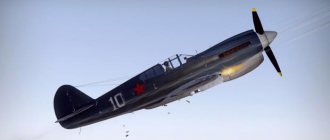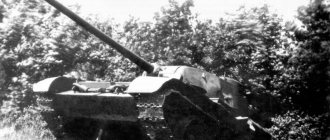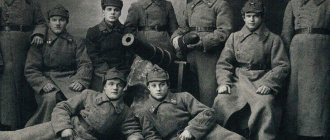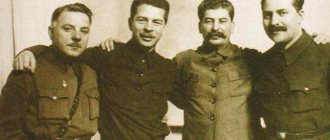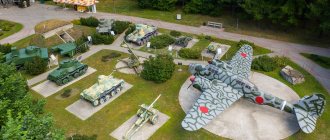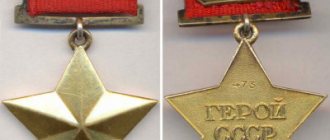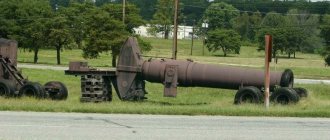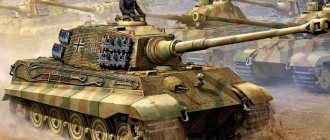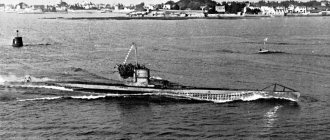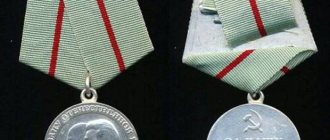Hero of the Soviet Union Vasily Grigorievich Zaitsev became a legend during his lifetime. Accustomed to the taiga, to hunting, and to weapons since childhood, in Stalingrad, Sergeant Major 1st Article Zaitsev destroyed 225 enemy soldiers and officers in a month and a half of fighting. Ten of them, the same snipers, were hunting for him and his partners. The eleventh, who arrived from Germany itself specifically to please Zaitsev, settled down forever there, in Stalingrad. The Russian hunter always emerged victorious from deadly duels...
“For us, the soldiers and commanders of the 62nd Army, there is no land beyond the Volga. We have stood and will stand to the death!” V. Zaitsev
Childhood and youth
Vasily Grigorievich Zaitsev was born on March 23, 1915 in the village of Eleninka, Orenburg province, in the Russian Empire.
Since childhood, the mountain taiga has become Vasily Zaitsev’s home thanks to his grandfather Andrei Alekseevich, a hereditary hunter. The old man zealously taught his beloved grandson the art of hunting animals, both harmless ones, like rabbits and deer, and very dangerous ones, like bears.
View this post on Instagram
A post shared by Pavel Mikhailovich (@zvezdaikrest) on Jan 8, 2020 at 5:00am PST
Vasily Zaitsev in his youth
In his memoirs “There was no land for us beyond the Volga. Notes of a Sniper" (1981) Vasily Zaitsev says that he once spent 2 days in the snowy taiga, wandering in the footsteps of a wounded wolf. He was accompanied by his cousin Maxim, also quite a young man. They returned home with two wolf skins, a dozen hare carcasses and a wolverine.
“And it’s surprising: neither grandfather, nor father, nor mother, nor grandmother, nor older sister - none of the relatives attached much importance to this, an ordinary episode from the life of two hunters. We spent the night in the forest in the bitter cold, killed two wolves and returned home - everything is normal and familiar,” wrote Vasily Zaitsev.
On his 12th birthday, the Hero of the Soviet Union received an “adult” gift - a 21-caliber Berdan gun with live ammunition.
Vasily Zaitsev was taught to read and write by his grandmother. In 1930, he mastered the profession of a fitter, and at the same time took accounting courses.
Sniper of the 62nd Army
Before the front, Vasily underwent some training. From the first days, he proved himself to be an extremely accurate shooter, killing 3 Nazis from a distance of almost a kilometer with an ordinary rifle. The command transferred him to the sniper group. There he received a Mosin sniper rifle - a mass-produced weapon, quite simple. From it, Zaitsev managed to destroy 32 invaders. After this, the rookie sniper becomes famous among the entire group of troops.
Personal life
Vasily Zaitsev met his wife in peacetime. He headed a machine-building plant in Kyiv, where his chosen one, party worker Zinaida Sergeevna, worked as a secretary.
One day, a Stalingrad fighter invited his beloved into his office, and an unknown lady handed her papers. It turned out that she was the head of the registry office. Vasily Zaitsev did not give time to think and categorically demanded to sign.
Vasily Grigorievich Zaitsev (March 23, 1915, Eleninka village, Orenburg province - December 15, 1991, Kiev) - 62nd sniper...
Published by Sergei Cherepanov Saturday, March 23, 2022
The graves of Vasily Zaitsev and his wife Zinaida Zaitseva
“That’s how I became Zaitseva. No wedding, white dress and “Bitter!” we didn’t have it,” Zinaida Sergeevna said in an interview with Arguments and Facts.
A party worker brought her son from a previous marriage to her new family. The Zaitsevs wanted more children, but were not lucky.
In the film “Enemy at the Gates” (2001), Vasily Zaitsev is credited with an affair with police officer Tanya Chernova. Whether this love affair actually took place in the personal life of the Hero of the Soviet Union is unknown. Tanya Chernova is not mentioned in Notes of a Sniper.
Clerk Vasya
It was about accounting training. Vasily served as a clerk in the artillery department and at the same time studied at the Military Economic School. After graduation, he received the honorary, but “non-military” position of head of the financial department.
Until now, military financiers are proud that the famous hero of the Battle of Stalingrad is rightfully included in their “workshop”. And although he left a “grain” position for the sake of the Stalingrad trench, he connected his post-war life with leadership work, and financial experience was not superfluous to him. The shooter also valued the fact of his service at sea. He remembered the Pacific Fleet with warmth, and throughout the war he wore a vest under his uniform, even though this was not according to the regulations.
Feat
Vasily Zaitsev was the eldest in the family, but grew up slowly. That's why they called him Kolobok, Arshin in a hat. The sniper reached a short height - 165 cm. This both hindered and helped on the fields of the Great Patriotic War.
In February 1937, Vasily Zaitsev was enlisted in the USSR Pacific Fleet as a clerk in the artillery department. The entrusted profession offended the Hero of the Soviet Union.
“I deliberately spoiled my handwriting, made grammatical mistakes in class, for this I was punished and again forced to sit down with books, draw up requests for various details,” the sniper wrote in his “Notes.”
Maybe that’s why Vasily Zaitsev was eager to go to the front lines of the Great Patriotic War. Only in the summer of 1942, when the Battle of Stalingrad broke out, were his requests heard and he was enlisted among 20 sailors in the 284th Rifle Division. By that time, Vasily had risen to the rank of chief foreman.
View this post on Instagram
A post shared by Place of Captivity of F. Paulus (@museum.memory) on Mar 23, 2022 at 12:19am PDT
Sniper Vasily Zaitsev, Hero of the Soviet Union
The first month in the mouth of the Battle of Stalingrad, Zaitsev again felt out of place. The command refused to take into account the talents hidden in the short guy. But one day he deftly cut down two enemies and earned the order of the regiment commander:
“Comrade Zaitsev, count all the fascists you kill. There are already two. Start your account with them.”
On October 21, 1942, Vasily was given an optical rifle, and he finally began to be listed as a sniper. Since then, the guy performed feats every day - he killed fascists, clearing the way for signalmen, messengers and ammunition carriers. In total, during the Great Patriotic War he killed 242 people.
The sharp-shooting Vasily Zaitsev worried the fascist command so much that Major Koenig, the head of the sniper school in Berlin, was sent to Stalingrad for his soul.
Some historians have questioned the existence of Major Erwin König (or Heinz Thorwald). At the same time, Vasily Zaitsev describes their 4-day duel in great detail.
Vasily Zaitsev was helped by cunning to defeat the “super sniper” Major Koenig. His comrade, Sergeant Nikolai Kulikov, slowly raised his helmet, as if a sniper was leaning out of cover to check the situation. Major Koenig took the bait and fired. Nikolai Kulikov stood up for a moment, screamed and fell, vividly depicting death. The fascist was filled with curiosity as to whether he really won. And then Vasily Zaitsev made his truly winning shot.
The duel formed the basis of the film Enemy at the Gates. The role of Vasily Zaitsev was played by Jude Law, a Hollywood actor. The reliability of the picture raises questions, since many facts are presented differently than the sniper himself told in his memoirs.
After the Battle of Stalingrad, Zaitsev took up training snipers - he recruited his own group (they were called “hares”) and wrote two textbooks.
Baptism by fire
And finally, he was enlisted in the second battalion of the 1047th regiment of the 284th Infantry Division. A unit formed from sailors of the Pacific Fleet transferred to infantry was transferred to Stalingrad.
On the night of September 22, 1942, the 284th Rifle Division safely crossed the Volga, entering Stalingrad, where heavy fighting raged.
The division immediately entered the battle. And here an episode occurred, which Vasily Zaitsev would later describe in his memoirs and which, in a very free interpretation, was included in the film “Stalingrad” by Fyodor Bondarchuk .
Zaitsev's battalion led an attack on German positions on the territory of the Stalingrad gas depot. The enemy, trying to stop the onslaught of Soviet troops, set fire to fuel containers with artillery fire and air strikes. This is how Zaitsev himself described what was happening in his book:
“Flames shot up over the base, gas tanks began to burst, and the ground caught fire. Giant flames rushed over the chains of the attacking sailors with a deafening roar. Everything is on fire. Another minute - and we will turn into coals, into firebrands...
- Forward! Forward!
Death
The heroic biography of Vasily Zaitsev ended on December 15, 1991. The cause of death is quite natural - the sniper lived for 76 years. Contrary to his last wishes, the body was buried at the Lukyanovsky military cemetery in Kyiv, and not in the soil of Stalingrad.
View this post on Instagram
A post shared by Guillermo Hernandez Gil (@wwilly1982) on Mar 26, 2022 at 7:07am PDT
Monument to Vasily Zaitsev
On January 31, 2006, the remains of Vasily Grigorievich were reburied on Mamayev Kurgan - in the place for the defense of which he gave his best shots. The cenotaph remains in Kyiv.
In 2011, the sniper’s wife Zinaida Sergeevna died. The cenotaph turned into a tombstone with photographs of the couple.
Stalingrad hunt
The Battle of Stalingrad provides an example of particularly effective sniper teams. Zaitsev’s heroic comrades-in-arms (snipers) numbered in the dozens, and during the months of particularly stubborn fighting at Stalingrad, they destroyed about 6 thousand enemy soldiers.
At the same time, Vasily not only personally engaged in “hunting”, but also led other snipers, showing them examples of correct battle tactics.
It is important to remember that Zaitsev was virtually self-taught in sniper business, but quickly became famous. The art of a sniper is not only the ability to accurately hit a target from a long distance. Any trained shooter with experience can do this. And the sniper’s task is not the same as that of an ordinary soldier. He must carry out the orders of the command, and in the process destroy any enemy he can. The sniper deals with especially cautious and protected targets - officers, spotters, and other snipers.
And perhaps the main thing in his skill is to be able to choose the right position and remain on it for hours without moving, preventing himself from being detected by the enemy. You need to be able to disguise yourself, your weapons and your intentions.
Zaitsev developed several new techniques in this area and improved existing ones. Some of his inventions are still in use today.
Vasily Zaitsev considered it necessary for the sniper to frequently change positions, but in such a way as not to impair visibility of the target. According to his method, positions should have been looked after during a lull, and not when there was already an order to act.
Zaitsev was strict about the issue of target detection. He rechecked the object several times to eliminate mistakes and not accidentally destroy a low-value enemy, leaving the true target intact. He did not fire at random to alarm the enemy. If this was required for the sake of completing a task, he entrusted the task to his partner. Vasily himself took every shot responsibly. But he knew and successfully used techniques designed to force the enemy to shoot inaccurately and reveal himself.
At the same time, to detect the enemy, Zaitsev used the laws of ballistics - he studied the direction and angle of the bullet hitting a false target (helmet, mitten, item of clothing). In terms of tactics, he believed that a sniper should be able not only to destroy the enemy, but also to defend himself - the living are more useful.
Memory
- A steamship named after Vasily Zaitsev plies along the Dnieper.
- In 2014, a monument to him was erected in the sniper’s native village, and in 2015, a bust was erected in Yaroslavl.
- In Petrozavodsk there is a street named after Vasily Zaitsev.
- The Zvezda TV channel dedicated an episode of the “Army Legends” series to Zaitsev’s exploits.
- Films about Vasily Grigorievich were shot not only in Hollywood, but also in Russia. The sniper served as the prototype for the heroes of two films by Yuri Ozerov - “Stalingrad” (1989) and “Angels of Death” (1993).
Duel of two aces
The fame of Zaitsev’s exploits spread to the other side of the front line. To eliminate the Soviet sniper, the German command called its specialist from Berlin - the head of the sniper school, whom Zaitsev calls “ Major Koenig ” in his memoirs.
According to a number of historians, Zaitsev’s opponent was the head of the sniper school in Zossen, SS Standartenführer Heinz Thorwald .
Koenig-Torvald managed to eliminate several Soviet snipers, after which Zaitsev began a counter hunt for him.
Awards
- 1942 (October) - medal “For Courage”
- 1942 (December) - title of Hero of the Soviet Union, Gold Star medal and Order of Lenin
- 1942, 1944 - Order of the Red Banner
- 1980 - title “Honorary Citizen of the Hero City of Volgograd”
- 1985 - Order of the Patriotic War, 1st degree
- Medal "For the Defense of Stalingrad"
- Medal "For victory over Germany in the Great Patriotic War of 1941–1945"
- Anniversary medal “For valiant work. In commemoration of the 100th anniversary of the birth of Vladimir Ilyich Lenin"
- Jubilee medal "Twenty years of Victory in the Great Patriotic War 1941–1945"
- Jubilee medal "Thirty years of Victory in the Great Patriotic War 1941–1945"
- Jubilee medal "Forty years of Victory in the Great Patriotic War of 1941–1945"
- Jubilee medal "30 years of the Soviet Army and Navy"
